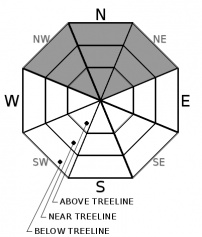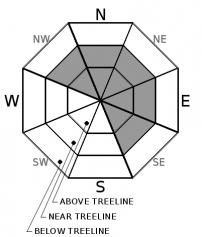| Sunday | Sunday Night | Monday | |
|---|---|---|---|
| Weather: | Mostly cloudy. Scattered snow showers in the morning, then snow showers likely in the afternoon. Snow levels below 7000 feet. Chance of precipitation is 65%. | Mostly cloudy then becoming partly cloudy. Isolated snow showers in the evening. Snow levels below 7000 feet. Chance of precipitation is 20%. | Partly cloudy. Snow levels below 7000 feet. Chance of precipitation is 5%. |
| Temperatures: | 33 to 38 deg. F. | 20 to 25 deg. F. | 39 to 45 deg. F. |
| Mid Slope Winds: | Light winds becoming southwest around 15 mph in the afternoon. | Southwest around 15 mph with gusts to 25 mph. | Southwest 15 to 20 mph with gusts to 35 mph. |
| Expected snowfall: | 90% probability of 1 to 3 inches. 10% probability of 3 to 4 inches. | SWE = up to 0.15 inch. | Up to 1 inch. | SWE = less than 0.10 inch. | No accumulation. | SWE = none. |
| Sunday | Sunday Night | Monday | |
|---|---|---|---|
| Weather: | Mostly cloudy. Scattered snow showers in the morning, then snow showers likely in the afternoon. Snow levels below 7000 feet. Chance of precipitation is 65%. | Mostly cloudy then becoming partly cloudy. Isolated snow showers in the evening. Snow levels below 7000 feet. Chance of precipitation is 20%. | Partly cloudy. Snow levels below 7000 feet. Chance of precipitation is 5%. |
| Temperatures: | 27 to 33 deg. F. | 17 to 22 deg. F. | 35 to 41 deg. F. |
| Ridge Top Winds: | Southwest around 15 mph with gusts to 25 mph. | Southwest around 15 mph with gusts to 35 mph. | Southwest 20 to 30 mph with gusts to 60 mph. |
| Expected snowfall: | 80% probability of 1 to 3 inches. 20% probability of 3 to 4 inches. | SWE = up to 0.15 inch. | Up to 1 inch. | SWE = less than 0.10 inch. | No accumulation. | SWE = none. |




















